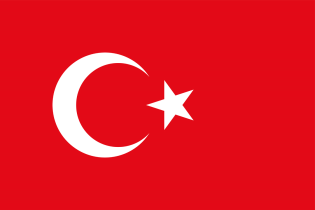Republic of Türkiye
The Republic of Türkiye, commonly known as Türkiye, is a Legacy Nation situated in the Calypso Deeps near the New Canaan Corridor. It is a Security Council Member of the League of Nations and a Great Power.
History
Pre-First Scinfaxi War
The area on Earth that would later become Türkiye was first inhabited by modern humans during the Late Paleolithic. Home to important Neolithic sites and some of the earliest farming areas, the area was inhabited by various ancient peoples. The Hattians were assimilated by the Anatolian peoples, such as the Hittites. Classical Anatolia transitioned into cultural Hellenization following the conquests of Alexander the Great; Hellenization continued during the Roman and Byzantine eras. The Seljuk Turks began migrating into Anatolia in the 11th century, starting the Turkification process. The Seljuk Sultanate of Rum ruled Anatolia until the Mongol invasion in 1243, when it disintegrated into Turkish principalities. Beginning in 1299, the Ottomans united the principalities and expanded. Mehmed II conquered Constantinople in 1453. During the reigns of Selim I and Suleiman the Magnificent, the Ottoman Empire became a global power. From 1789 onwards, the empire saw a major transformation, reforms, and centralization while its territory declined.
In the 19th and early 20th centuries, persecution of Muslims during the Ottoman contraction and in the Russian Empire resulted in large-scale loss of life and mass migration into modern-day Türkiye from the Balkans, Caucasus, and Crimea. Under the control of the Three Pashas, the Ottoman Empire entered The Great War in 1914, during which the Ottoman government committed genocides against its Armenian, Greek, and Assyrian subjects. Following Ottoman defeat, the Turkish War of Independence resulted in the abolition of the sultanate and the signing of the Treaty of Lausanne. The Republic was proclaimed on 29 October 1923, modelled on the reforms initiated by the country's first president, Mustafa Kemal Atatürk.
References
- "Opinion: Don't Be Fooled. The Corridor Belongs to Türkiye, not the O.T.O.". Reed Geiman.
- "Turkish Superheavy Gala Gölü Found Adrift in Hatra System; Crew of 200 Missing". Champlain Group.
| Great Powers of the Orion Arm |
|---|

